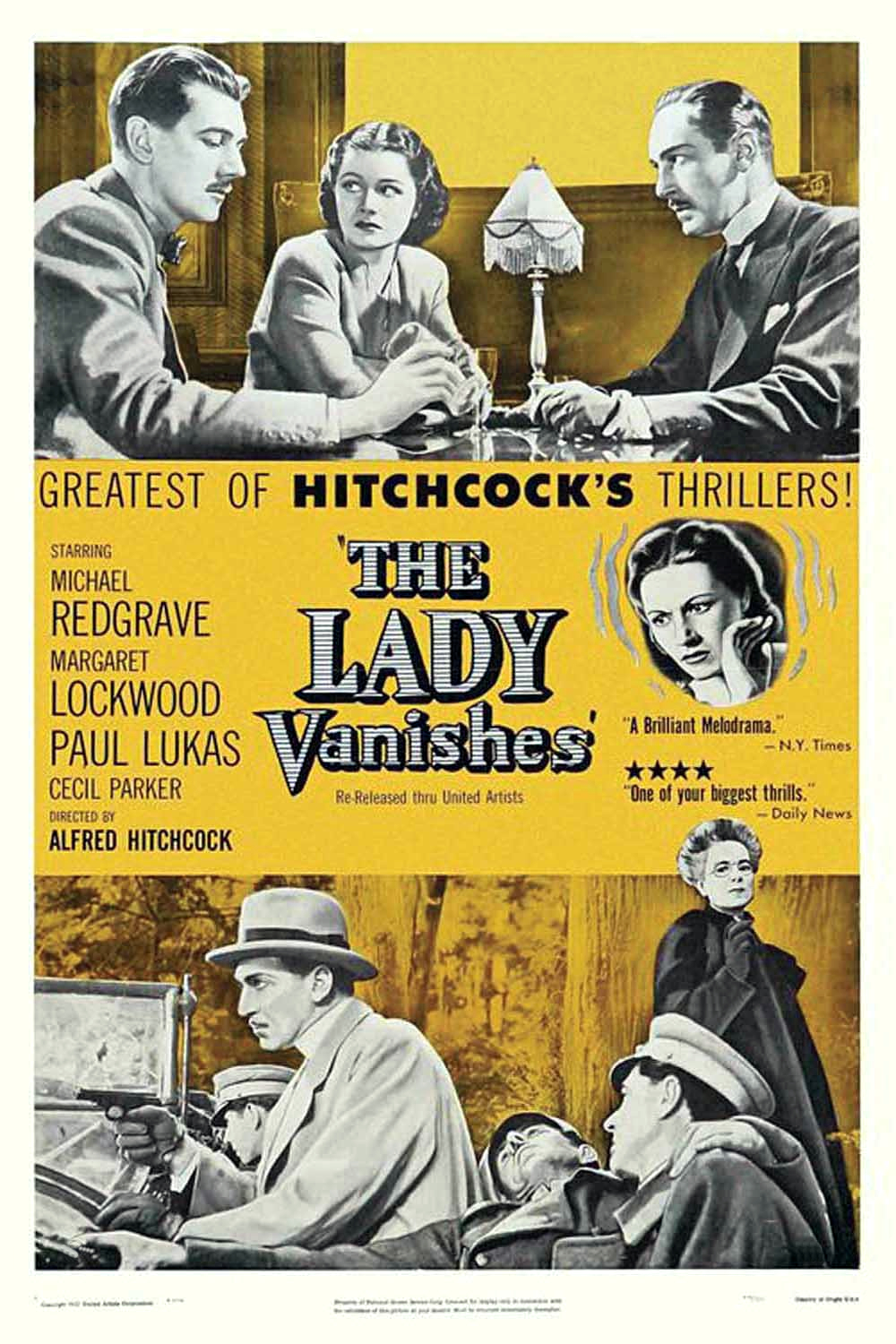
This review was originally written in 2009 for a blog I kept called Total Cinema.
THE LADY VANISHES starts with a shot of a town constructed in miniature;it’s the same shot he would use two years later, in REBECCA (1940) and,I’m sure, many other of his early films. It’s a technique Hitchcock was obviously fond of, continuing the tradition after emigrating to America, when he was able to use cranes and helicopters to produce a more realistic version of the same thing. This film, as everything he made (that I’ve seen) is dominated by his presence; he films boldly, all aspects of style a signature, building mystery and suspense and delivering comedy with casual sureness, confident as only a publicly confirmed master can be.
Despite the mystery and suspense, the comedy is what I found to be most engaging, and the romance most confusing: the heroine (“Iris”) was played well by Margaret Lockwood, but in other respects terribly: Michael Redgrave plays “Gilbert,” whose introduction into Iris’ life is rude and shocking. Her early revulsion turns into a patronizing humour as she becomes embroiled in a mystery that seems to involve all the passengers on the train. For the rest of the film, because Lockwood performs so engagingly well as Iris, I assumed that Gilbert would turn out to be the villain. Confusion took full hold when, in fact, the opposite occurs and the two end up together. But even when they kissed in the carriage as Iris dodges her fiancee, it can be clearly observed that Gilbert makes the move to embrace her, and I say that there is reluctance in her return of it. Is this, then, an error in direction on Hitchcock’s part, or on the actress, Margaret Lockwood’s? One must assume neither, since, as I have already stated, Hitchcock is a master film-maker who, according to this filmography, had already directed twenty-six films! There is no cause to suspect a fault in Lockwood’s craft, either, having engaged us with charismatic aplomb from the beginning of THE LADY VANISHES, showing strong femininity (her legs, in what must have been a risque scene) and later, courage when she gets involved with a fist fight. So if director and actor can both be counted on to not overlook such a detail, we can only assume that Iris and Gilbert’s confusing relationship was crafted with subtle intent.
THE LADY VANISHES, then, displays all the technical innovation that Hitchcock made standard of his style, but it is also typical of Hitchcock’s forward-thinking attitude, his relentlessly rebellious spirit. Iris and Gilbert’s relationship is a complex, modern one, cast in almost unbelievably nuanced shades by Lockwood and Redgrave. They are not the only examples of unorthodox relationships and characters in Hitchcock films, of course: ROPE (1948) is about a homosexual couple, their relationship only alluded to for fear of censorship, and the psychologies of all the many killers are never simple, one-dimensional things (Norman Bates in PSYCHO (1960), and the “Necktie Murderer” of FRENZY (1972)), but studies of horrifying, twisted characters. There is no terror or other cause for horror in THE LADY VANISHES, but rather it is comedic in the unique British style, filled with captivating mystery and suspense; never aiming low, Hitchcock is also an artist, casually breaking rules and brushing aside taboo by presenting us with realistic, modern characters embroiled in a classic unassuming mystery.